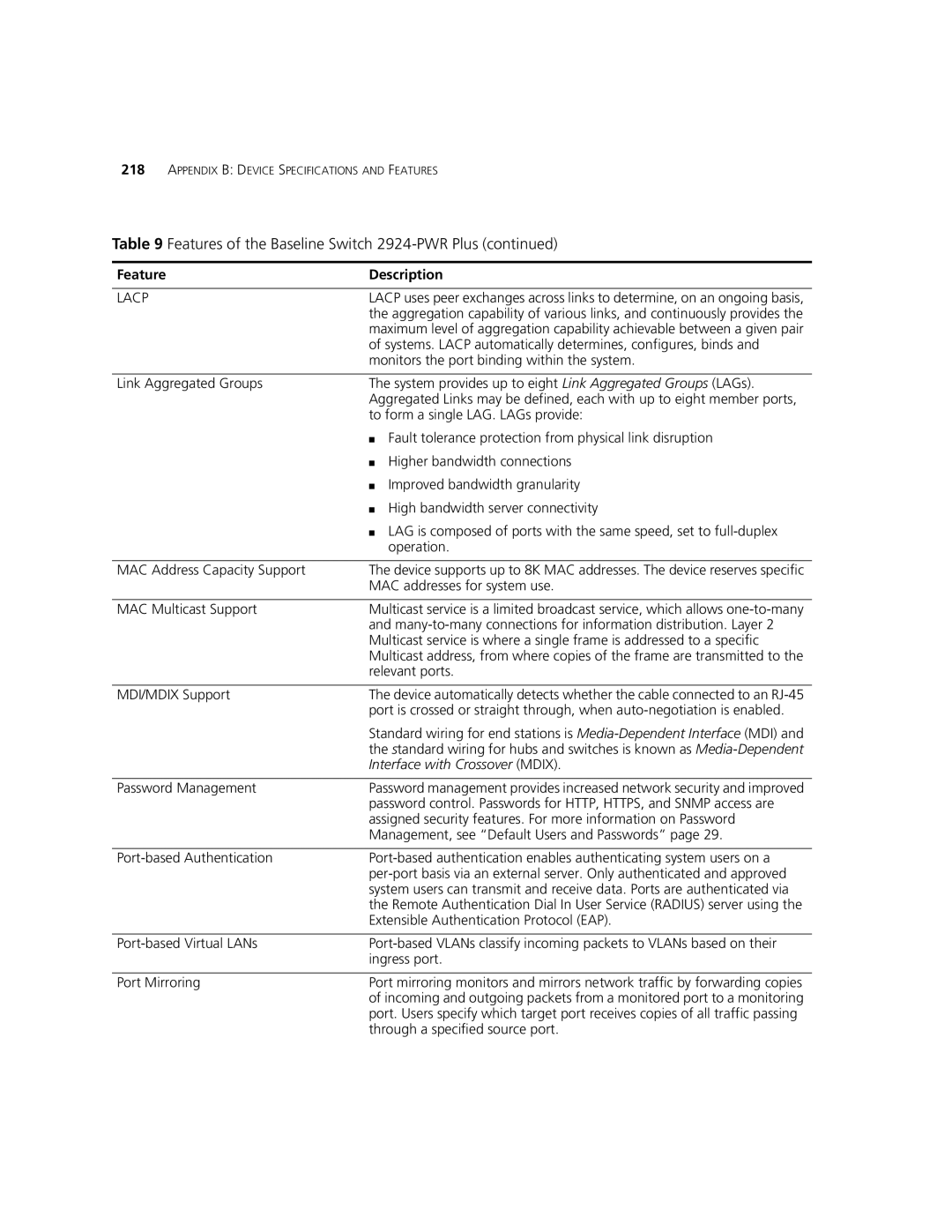218APPENDIX B: DEVICE SPECIFICATIONS AND FEATURES
Table 9 Features of the Baseline Switch 2924-PWR Plus (continued)
Feature | Description | |
|
| |
LACP | LACP uses peer exchanges across links to determine, on an ongoing basis, | |
| the aggregation capability of various links, and continuously provides the | |
| maximum level of aggregation capability achievable between a given pair | |
| of systems. LACP automatically determines, configures, binds and | |
| monitors the port binding within the system. | |
|
| |
Link Aggregated Groups | The system provides up to eight Link Aggregated Groups (LAGs). | |
| Aggregated Links may be defined, each with up to eight member ports, | |
| to form a single LAG. LAGs provide: | |
| ■ Fault tolerance protection from physical link disruption | |
| ■ | Higher bandwidth connections |
| ■ | Improved bandwidth granularity |
| ■ High bandwidth server connectivity | |
| ■ LAG is composed of ports with the same speed, set to | |
|
| operation. |
|
| |
MAC Address Capacity Support | The device supports up to 8K MAC addresses. The device reserves specific | |
| MAC addresses for system use. | |
|
| |
MAC Multicast Support | Multicast service is a limited broadcast service, which allows | |
| and | |
| Multicast service is where a single frame is addressed to a specific | |
| Multicast address, from where copies of the frame are transmitted to the | |
| relevant ports. | |
|
| |
MDI/MDIX Support | The device automatically detects whether the cable connected to an | |
| port is crossed or straight through, when | |
| Standard wiring for end stations is | |
| the standard wiring for hubs and switches is known as | |
| Interface with Crossover (MDIX). | |
|
| |
Password Management | Password management provides increased network security and improved | |
| password control. Passwords for HTTP, HTTPS, and SNMP access are | |
| assigned security features. For more information on Password | |
| Management, see “Default Users and Passwords” page 29. | |
|
| |
| ||
| system users can transmit and receive data. Ports are authenticated via | |
| the Remote Authentication Dial In User Service (RADIUS) server using the | |
| Extensible Authentication Protocol (EAP). | |
|
| |
| ingress port. | |
|
| |
Port Mirroring | Port mirroring monitors and mirrors network traffic by forwarding copies | |
| of incoming and outgoing packets from a monitored port to a monitoring | |
| port. Users specify which target port receives copies of all traffic passing | |
| through a specified source port. | |
